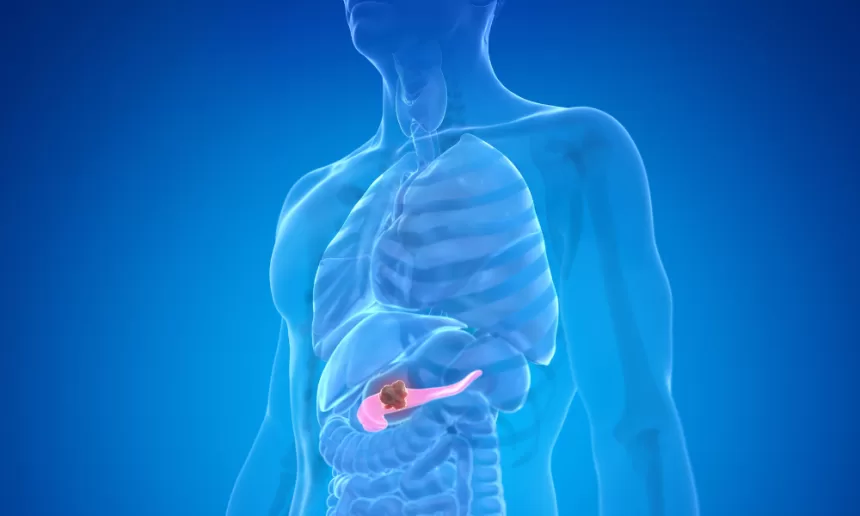Pancreatic cancer surgery
Pancreatic cancer is one of the most aggressive forms of cancer, and treatment often requires surgery to remove the tumor. The Whipple procedure, also known as pancreaticoduodenectomy, is one of the most common and effective surgeries for treating pancreatic cancer. This article will guide you through the Whipple procedure, including its types, the procedure steps, benefits, risks, costs, recovery, and the best hospitals in India that perform this surgery.
What is the Whipple Procedure?
The Whipple procedure is a highly complex surgery performed to remove tumors from the pancreas, especially when the cancer is located in the head of the pancreas. It involves the removal of the pancreas’s head, a portion of the small intestine (duodenum), the gallbladder, the bile duct, and sometimes part of the stomach. The procedure aims to remove cancerous tissue while trying to preserve the function of other organs as much as possible.
Doctors consider the Whipple procedure a life-saving surgery for patients with pancreatic cancer, especially when the cancer is localized and has not spread to distant organs. They often combine it with chemotherapy or radiation therapy to improve the chances of survival.
Why is the Whipple Procedure Performed?
The Whipple procedure is primarily performed for the following reasons:
- It removes pancreatic cancer: The Whipple procedure helps remove the tumor from the pancreas, thus helping eliminate the cancerous cells and preventing them from growing further.
- It reduces symptoms: Pancreatic cancer can cause jaundice, weight loss, and digestive problems. The Whipple procedure helps remove the cancerous tissue and reduce these symptoms.
- To improve survival rates: Doctors consider the Whipple procedure a curative treatment option for patients with localized pancreatic cancer, and it significantly increases the chances of long-term survival.
- To treat other conditions: In some cases, surgeons may use the Whipple procedure to treat other conditions affecting the pancreas, such as benign tumors or chronic pancreatitis.
Types of Whipple Procedure
There are various sorts of Whipple procedures, depending on how extensive the cancer is and what individual needs of a patient demand:
- Classic Whipple Procedure (Standard Whipple)
This is the most common type of Whipple procedure; it involves the complete removal of the head of the pancreas, duodenum, gallbladder, and bile duct. The rest of the pancreas, bile duct, and small intestine are then reconnected to maintain normal digestion.
- Pylorus-Preserving Whipple Procedure
In this variant, surgeons preserve the pylorus portion of the stomach that controls food flow into the small intestine. They may do this to decrease the complications arising from the gastric emptying problem and to achieve better digestion after surgery in the long run.
Procedure Steps
The Whipple procedure is a major surgery that usually lasts between 6 and 8 hours. The steps are described as follows:
- Anesthesia: General anesthesia is used so that the patient feels nothing about the procedure: sleep and no discomfort.
- Incision: A large incision is made in the abdomen to access the pancreas and the surrounding organs.
- Tumor Removal: The surgeon removes the head of the pancreas. This also removes the duodenum, gallbladder, as well as the bile duct. Sometimes it also removes a part of the stomach.
- Reconstruction: After the disease-causing tissue is excised, the surgeon reconstructs the remaining pancreas, bile duct, and small intestine to reestablish digestive capabilities. During a pylorus-preserving Whipple, the pylorus is preserved.
- Closure: The surgeon closes the incision and sends the patient to the recovery room for observation.
Benefits of the Hipple Procedure
The Whipple procedure has several significant advantages for the patient:
- A potential cure for localized pancreatic cancer: If done early, the Whipple procedure can completely remove the tumor and offer the potential for a cure, improving long-term survival.
- Improvement in quality of life: The surgery can alleviate painful symptoms of pancreatic cancer, such as jaundice and digestive problems, improving the patient’s overall well-being.
- Extended survival rates: The Whipple procedure offers a chance for extended survival when combined with other treatments like chemotherapy for patients with resectable pancreatic cancer.
- Effective for benign conditions: The Whipple procedure is not only effective for pancreatic cancer but can also treat other pancreatic issues, such as benign tumors or pancreatitis.
Cost of the Whipple Procedure
- United States: $40,000 to $80,000
- United Kingdom: $30,000 to $50,000.
- India: $6,000 to $12,000.
Best Hospitals in India for Pancreatic Cancer Surgery
India has some of the best hospitals for pancreatic cancer treatment, especially if a Whipple procedure is required. The top hospitals are:
- Metro Hospital Faridabad
- Medanta—The Medicity—Gurgaon
- Max Super Speciality Hospital, Delhi NCR
- Fortis Memorial Research Institute, Gurgaon, Delhi NCR
Risks and Complications
Like any major surgery, the Whipple procedure has risks and potential complications.
- Infection: There is a risk of infection at the surgical site.
- Bleeding: The significant surgery can sometimes cause excessive bleeding that may be necessary to stop by blood transfusion or reoperation.
- Digestive complications: Some patients also develop digestive post-surgical difficulties that require an alteration in the diet or the introduction of enzymes into the body.
- Weight loss: A lot of patients lose much weight after the the Whipple procedure. This is brought about by alteration in digestion and absorption.
- Delayed gastric emptying: In a few cases, the stomach empties slowly, leading to nausea and discomfort.
- Cancer recurrence: Although the surgery aims to remove all cancerous tissue, there is a risk that the cancer might come back, requiring further treatments.
Recovery
Recovery after the Whipple procedure is a long process, and patients usually spend 7-10 days in the hospital. The recovery process can take several months, and this is what you can expect:
- Duration in Hospital: The majority of the patients are retained in the hospital for 7 to 10 days by considering their recovery and complications.
- Early Recovery: In the first few weeks, the patients might show symptoms of pain, fatigue, and digestive problem.
- Dietary requirement: Patients, after surgery, would require a special diet to digest and nourish their bodies. Some would require an intake of enzyme supplements to digest the food.
- Physical therapy: The more physical activity and exercise, the faster the healing process and recovery.
- Follow-up: Regular check-ups are done to monitor for signs of recovery and possible reoccurrence of cancer. Follow-up can include chemotherapy or radiation therapy after surgery to minimize recurrence.



